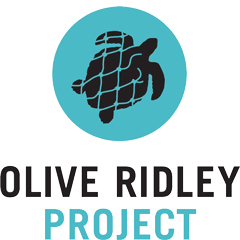Photo-ID is a non-invasive technique used to identify individual animals in a population – and track them over time – from natural marks on the body. For sea turtles, it relies on capturing photographs of the unique patterns of scales on the animal’s face. Photo-ID can be used as an alternative to tagging and data may be analysed through Capture-Mark-Recapture (CMR) methods. Data collection involves no handling or harassment of animals and causes no harm to animals.
Why identify individual sea turtles?
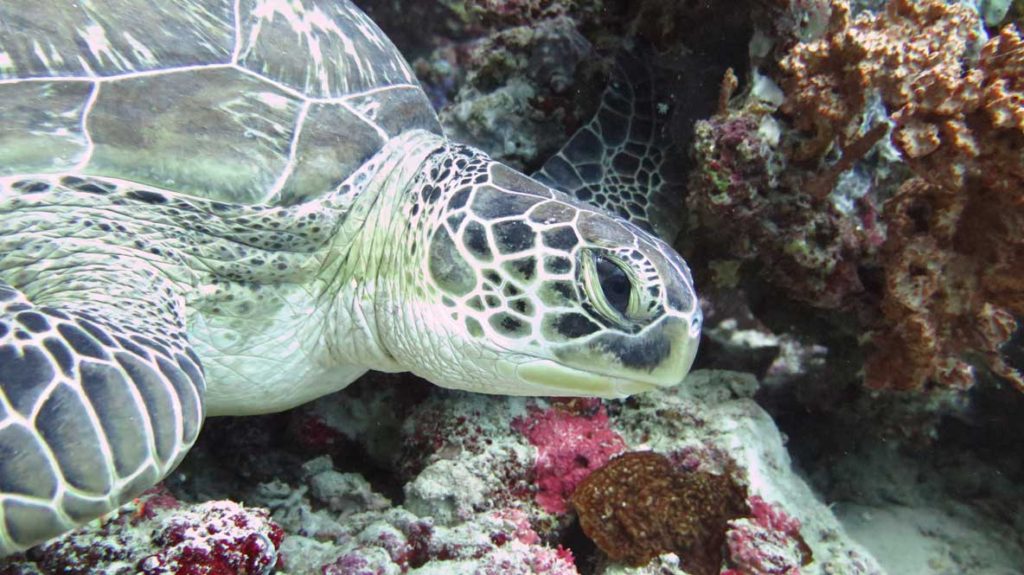
All seven species of sea turtles are threatened by extinction, and extinction means that they are gone forever. To create effective conservation strategies to prevent this from happening, we need to be able to protect sea turtles and their habitats. Therefore, we first need to know the status quo – we must establish a population baseline dataset in the area of interest. To do that we need reliable information to study the population structure, distribution, habitat use and migration patterns of all sea turtle species.
The starting point for ecological and conservation studies is often the ability to identify individuals. This allows us to make accurate estimates of population size and then we can use statistical modelling to reveal patterns of residency and movement of turtles between reefs. It can thus help determine the population and population structure of a reef at a given time and, for example, allows us to calculate inter-nesting periods and analyse how stable a local population is.
The difficulty of studying sea turtles
Sea turtles spend most of their life at sea. In addition, they are truly global citizens, crossing oceans, feeding and nesting on the shores of many different countries. All these factors combined with their migratory nature make them rather difficult to study. Yet, although there are many things we do not know about turtles, years of research have provided insights into daily activities and behaviours such as feeding, courtship, mating and nesting.
Most sea turtle research and conservation efforts happen on nesting beaches because they are more easily accessible than the open ocean. Nesting beaches are extremely important to the survival of sea turtles. However, sea turtles spend most of their life in the water. And what they do, where they go, and the threats they face in the ocean, are still largely unknown.
Photo-ID: “Capture-Mark-Recapture”
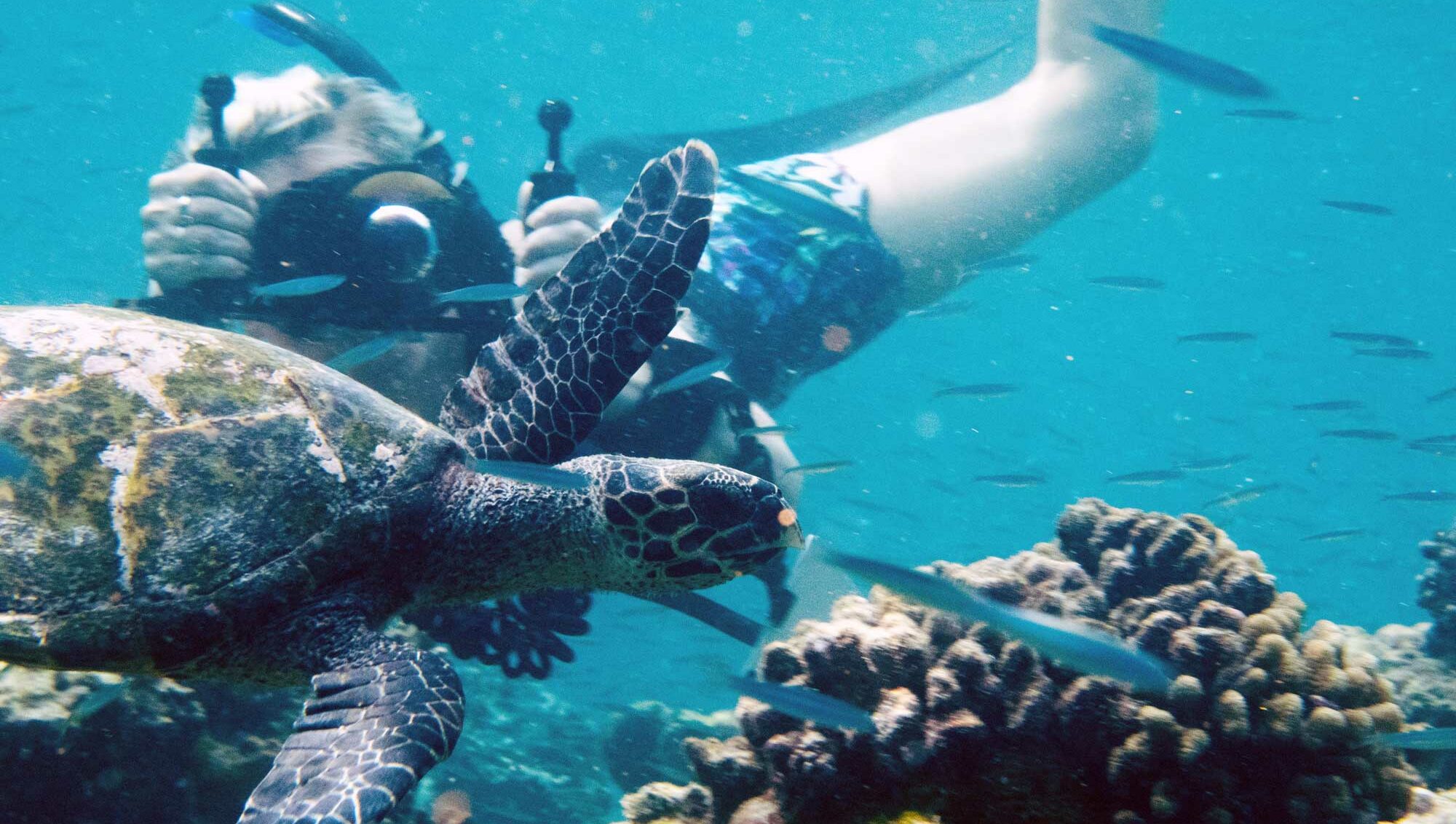
Traditionally, sea turtle researchers have used standard ‘capture-mark-recapture’ (CMR) methods based on flipper tagging or satellite tagging (PTT) to monitor turtles. Tagging is costly and can cause stress to the turtle.
Furthermore, tags seldom stay attached for a lifetime and are also difficult to apply, thus limiting the number of deployed tags and the participation of untrained volunteers and citizen scientists.
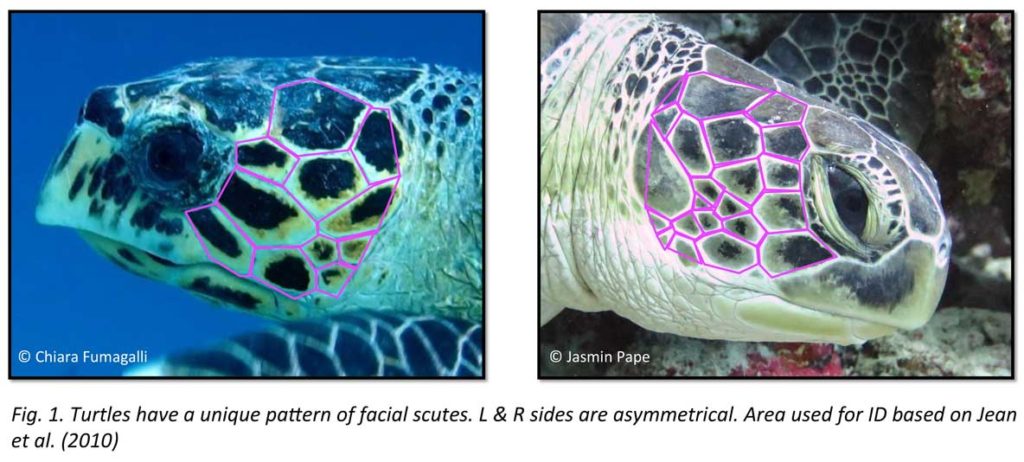
Photo-ID, however, is a cost-effective, non-invasive technique that makes it easy to monitor sea turtles without disturbing them. It is also a scientifically proven method of “tagging” animals.
This method identifies individual turtles by comparing their facial scales and has been shown to be more effective than tagging in 2008 by Reisser et al.
The facial scales are unique, like a fingerprint, and stay the same over time. Photo-ID is rapidly becoming an effective tool for identifying individual turtles and long term monitoring of the marine turtle population, which is applied all over the world from Brazil to Reunion and Malaysia. It is also a great way to involve “citizen scientists”; that is members of the general public with little to no scientific training.
The Internet of Turtles (IoT)
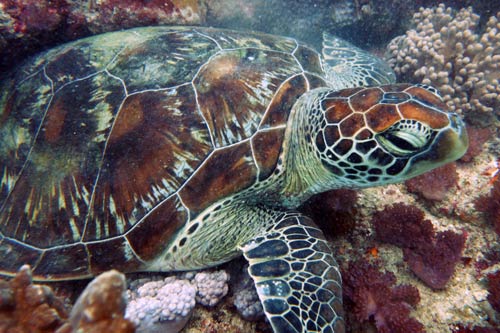
As of December 2024, the Olive Ridley Project has identified 5,150 unique hawksbills and 1,725 greens, and logged 41,763 sightings of sea turtles, in the Maldives.
In Kenya, we have identified 86 individual hawksbills and 697 greens, and logged 4,881 sightings.
In Oman, we have identified 9 hakwbills and 184 green turtles, and logged 903 sightings.
In Seychelles, we have identified 236 hawksbills and 11 green turtles, and logged 577 sea turtle sightings.
n Pakistan, we have identified 13 green turtles on 13 occasions.
Each month we add hundreds of new sightings to our database – one of the largest such databases in the world.
We use the Internet of Turtles (IoT) platform to analyse and document all turtle sightings. This new conservation tool has the potential to greatly improve and facilitate data collection for sea turtles by using Photo-ID data. The IoT platform combines data analytics with individual animal tracking. IoT uses computer vision to compare new IDs to the existing database and Wildbook to store metadata.
This is a global-scale database of sea turtle information which will help researchers identify the most important sea turtle nesting and foraging areas in need of protection, and the highest priority conservation actions. In addition, it will enable researchers to measure the effectiveness of conservation efforts and inform strategic conservation decisions world wide.
Submit sea turtle photo-ID images as a citizen scientist
You can contribute to this vital research as a citizen scientist. Send us your sea turtle photos from Maldives, Kenya, Oman and Seychelles.
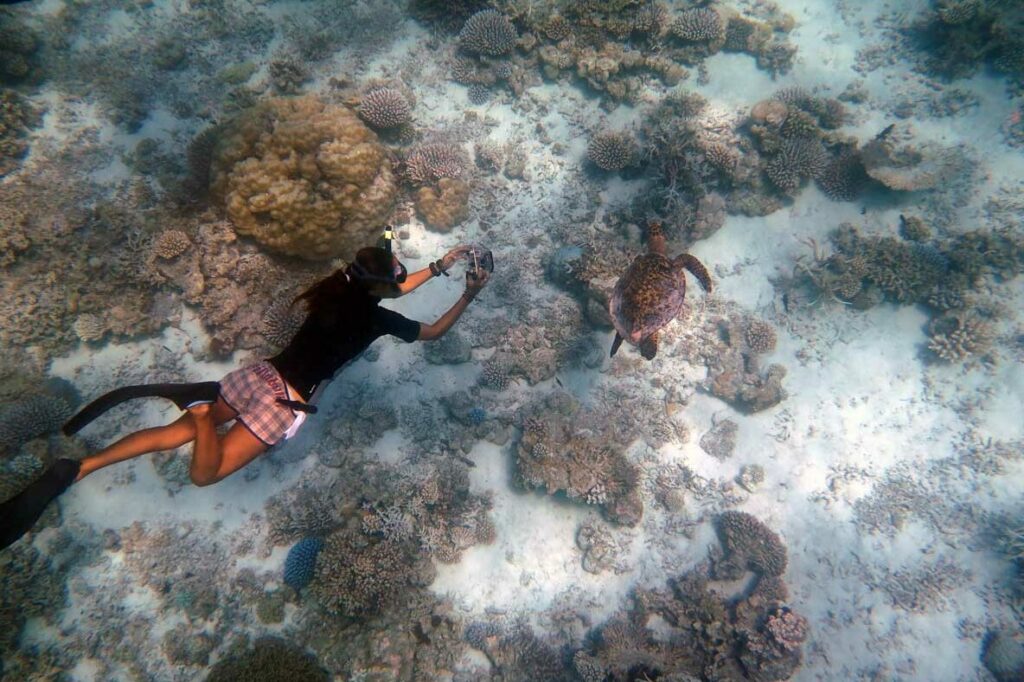
To make a sea turtle ID, we need:
- One clear image of the left side of the sea turtle’s face
- One clear image of the right side of the sea turtle’s face
- Specific location information (ideally GPS coordinates)
- Date and time of the sighting(s)
- Your name
If you have images of the full shell and/or the top of the head, we would like those too.
For the Maldives, Seychelles, Oman, please send your images by email to seaturtleid@oliveridleyproject.org.
For Kenya, please send your images by email to dianibeach@oliveridleyproject.org.
If you are based in Kenya, the Maldives, Oman, or the Seychelles and would like to become a regular contributor, please contact us on seaturtleid@oliveridleyproject.org.


